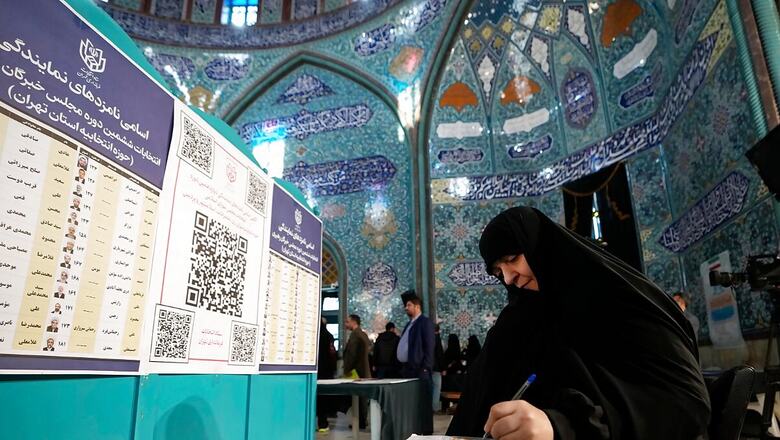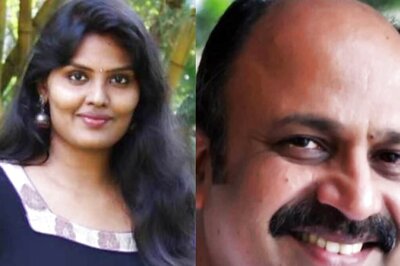
views
Iran began voting Friday in its first parliamentary elections since the mass 2022 protests over its mandatory hijab laws after the death of Mahsa Amini, with questions looming over just how many people will turn out for the poll.
Iran’s Supreme Leader Ayatollah Ali Khamenei, 84, cast one of the first votes in an election that also will see new members elected to the country’s Assembly of Experts. The panel of clerics, who serve an eight-year term, is mandated to select a new supreme leader if Khamenei steps down or dies, giving their role increased importance with Khamenei’s age.
Khamenei voted before a crowd of journalists in Tehran, his left hand slightly shaking as he took his ballot from his right, paralyzed since a 1981 bombing. State television showed one woman nearby weeping as she filmed Khamenei with her mobile phone. He urged people to vote as soon as possible in the election, saying that both Iran’s friends and enemies were watching the turnout.
“Pay attention to this, make friends happy and disappoint the evil-wishers,” he said in brief remarks by the ballot boxes. Initial election results are expected as soon as Saturday. Some 15,000 candidates are vying for a seat in the 290-member parliament, formally known as the Islamic Consultative Assembly. Terms run for four years, and five seats are reserved for Iran’s religious minorities.
Under the law, the parliament has oversight over the executive branch, votes on treaties and handles other issues. In practice, absolute power in Iran rests with its supreme leader. Hard-liners have controlled the parliament for the past two decades — with chants of “Death to America” often heard from the floor.
Under Parliament Speaker Mohammad Bagher Qalibaf, a former Revolutionary Guard general who supported a violent crackdown on Iranian university students in 1999, the legislature pushed forward a bill in 2020 that greatly curtailed Tehran’s cooperation with the United Nations nuclear watchdog, the International Atomic Energy Agency.
That followed then-President Donald Trump’s unilateral withdrawal of America from Iran’s nuclear deal with world powers in 2018 — an act that sparked years of tensions in the Middle East and saw Iran enrich enough uranium at record-breaking purity to have enough fuel for “several” nuclear weapons if it chose.
More recently, the parliament has focused on issues surrounding Iran’s mandatory head covering, or hijab, for women after the 2022 death of 22-year-old Amini in police custody, which sparked nationwide protests. The protests quickly escalated into calls to overthrow Iran’s clerical rulers. A subsequent security crackdown killed over 500 people, with more than 22,000 detained.
Calls for an election boycott have spread in recent weeks, including from imprisoned Nobel Peace Prize laureate Narges Mohammadi, a women’s right activist, who called them a “sham.” The boycott calls have put the government under renewed pressure — since its 1979 Islamic Revolution, Iran’s theocracy has based its legitimacy in part on turnout in elections.
The state-owned polling center ISPA hadn’t put out election data prior to the vote until Thursday, something highly unusual as their figures typically get released much earlier. Its polling, based on a survey of 5,121 voting-age people, predicted a turnout of 23.5% in the capital, Tehran, and 38.5% nationally. It said the margin of error in the poll was 2%.

















Comments
0 comment